The Jut Art Museum stages the international traveling photography exhibition “Civilization: The Way We Live Now” from now until 30 June 2024.
Featuring a transnational collaborative production, dual-venue, and some 200 works by more than 100 artists, this exhibition invites reflection on the present and the future of humanity.
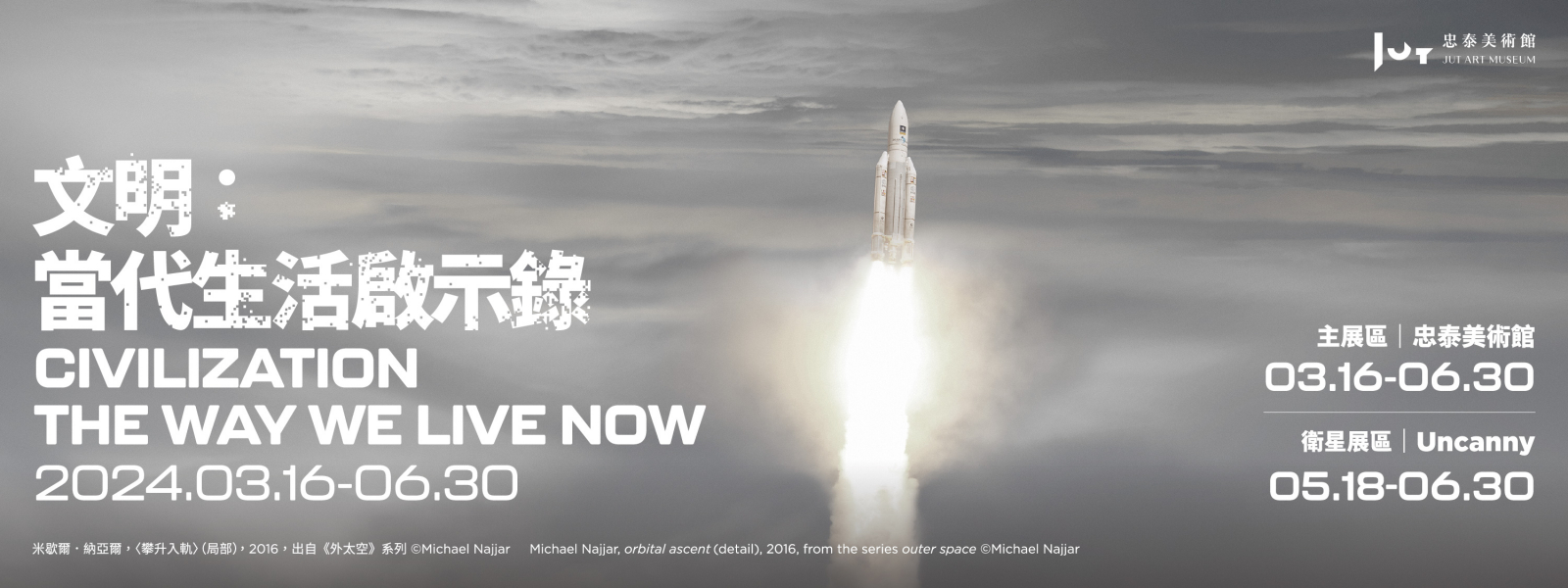
“Photography, a manifestation of contemporary eyes, not only gazes at our Civilization but also greatly illuminates our contemporary life.”
Jut Art Museum is currently hosting “Civilization: The Way We Live Now” (hereafter referred to as “Civilization”). Produced transnationally by the Foundation for the Exhibition of Photography (FEP) and the National Museum of Modern and Contemporary Art of Korea (MMCA), in collaboration with the Jut Art Museum, this phenomenally popular photography exhibition has toured seven major countries around the world – and was seen in Seoul, Beijing, Melbourne, Auckland, Marseille, Forlì and London – where it has attracted more than 270,000 visitors in total. It is on view in Taipei from 16 March to 30 June 2024. This is the first all-photography exhibition at the Jut Art Museum since its inauguration.
As the primary art museum in Taiwan to focus on issues about the city and future, the Taipei-based Jut Art Museum is pleased to bring “Civilization” to Taiwan, an exhibition that comprehensively explores major issues concerning our current planetary-wide civilization. The exhibition shines a spotlight on the modalities of human collective living in the globalized world since the beginning of the 21st century and features some 200 works by more than 100 artists. It covers a riotous profusion of subjects, such as dwelling and transport, production and consumption, work and recreation, thinking and creation, as well as conflict and cooperation.
“Civilization” comprises eight chapters meticulously arranged in the main venue at the Jut Art Museum and the satellite venue at the NOKE 3F Uncanny. These eight themes are: “HIVE,” “FLOW,” “PERSUASION,” “CONTROL,” “RUPTURE,” “NEXT?” (the six themes are addressed in the main venue), “ESCAPE,” and “ALONE TOGETHER” (the two themes are addressed in the satellite venue). As curator William A. Ewing has explained, “In a sense, we actually have two exhibitions here: one is an exhibition about civilization, seen through the eyes of photography; the second is an exhibition about photography, seen through the lens of civilization. Either way, we hope our Taiwan visitors will enjoy the exhibition.”
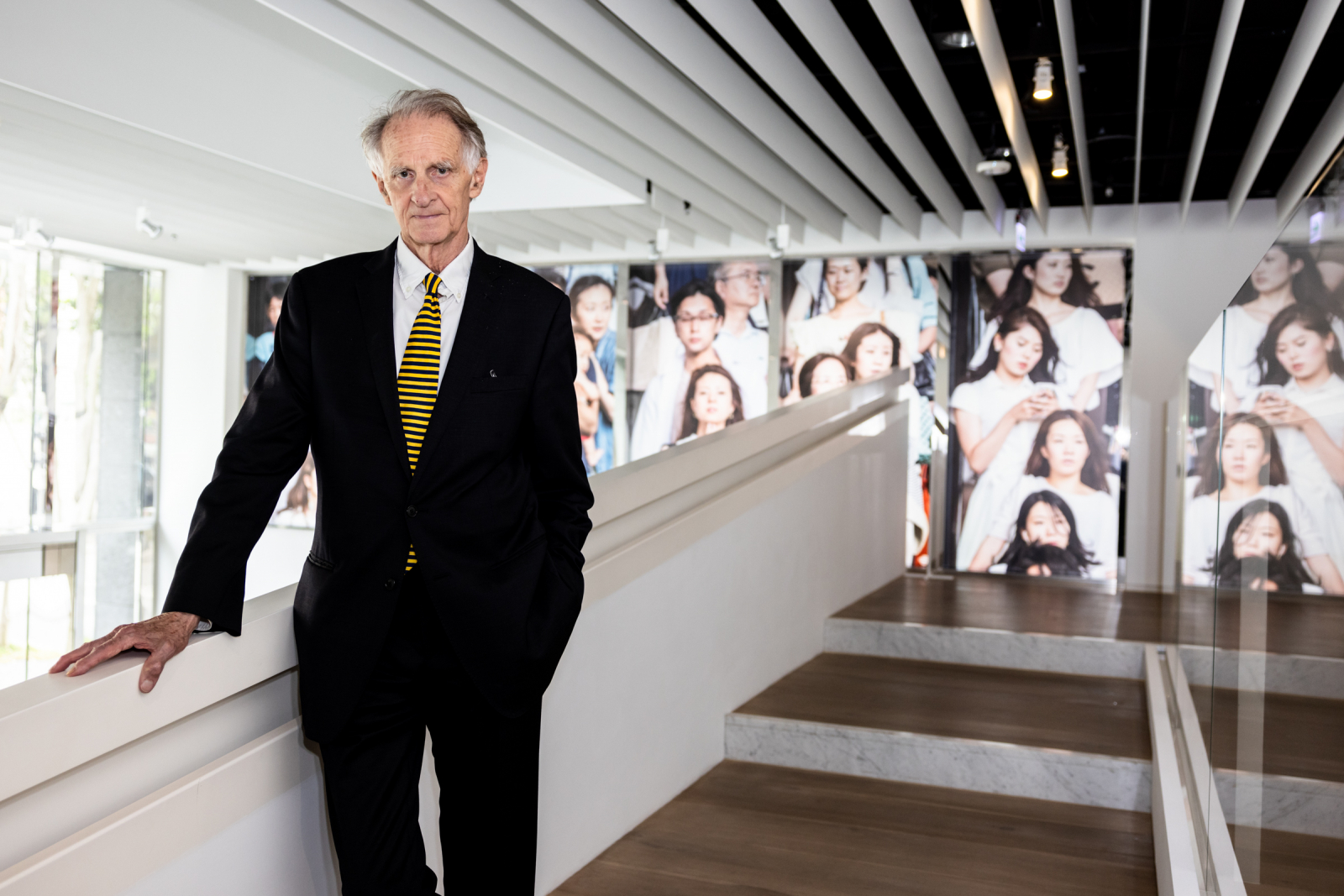
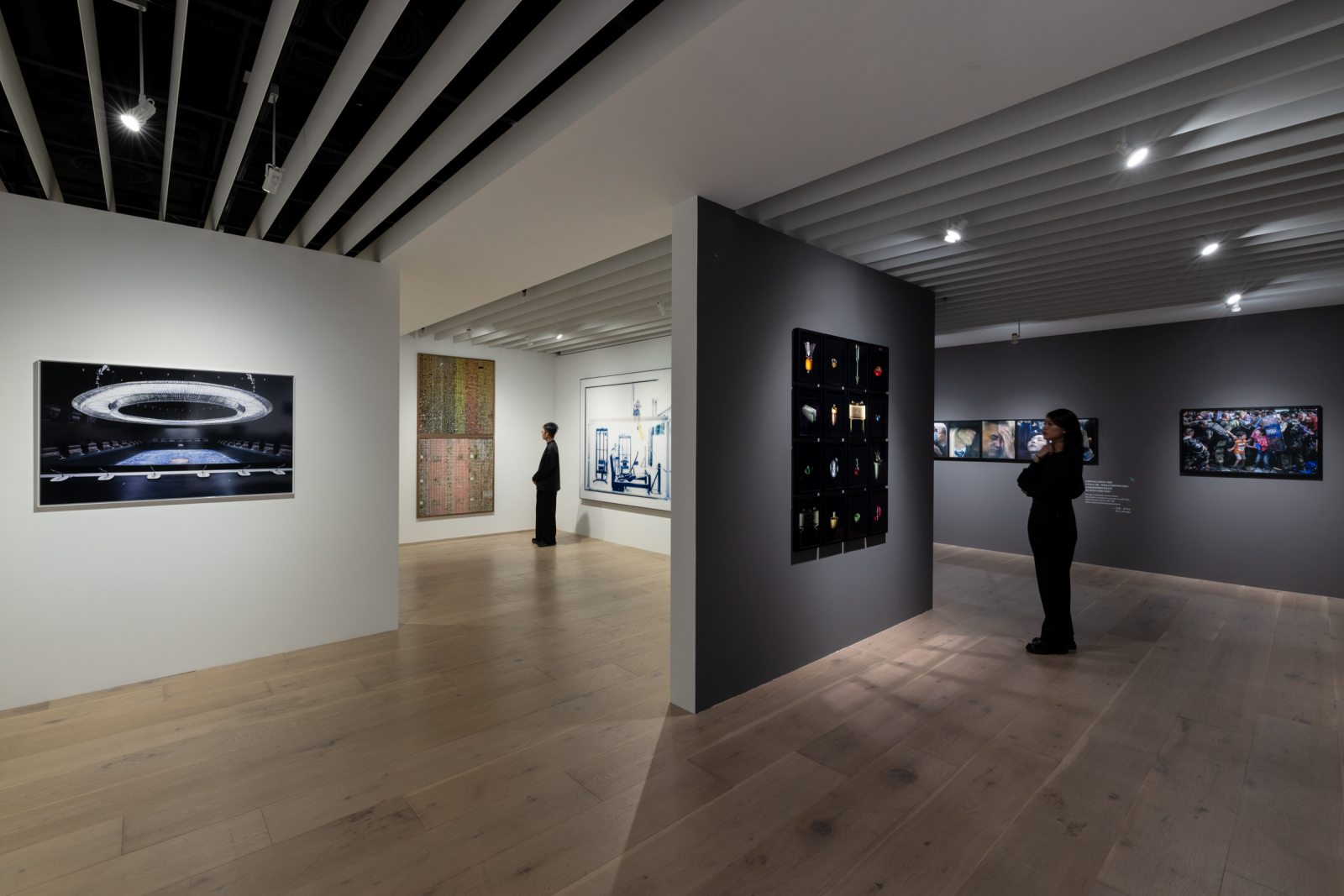
Civilization: The Way We Live Now — A perspective that reviews the past to envision the future
The recent introduction of “Sora,” a text-to-video model developed by OpenAI, shocked the world again since it seems to augur the technological singularity. Humanity is in an era of rapid progress, and human civilization is evolving, expanding, and mutating with an unimaginable force in this globalized world. Via the mirror-like “photography,” “Civilization” reflects the fruits of our collective endeavors, foregrounds the complexity and contradictions of our civilization, and meanwhile illuminates our contemporary life. As manifested in Candida Höfer’s work Augustiner Chorherrenstift Sankt Florian III 2014, the library maintained for three centuries is tantamount to a database of human knowledge that bears testimony to the millennial evolution of our planetary civilization and serves as a building block of human progress.
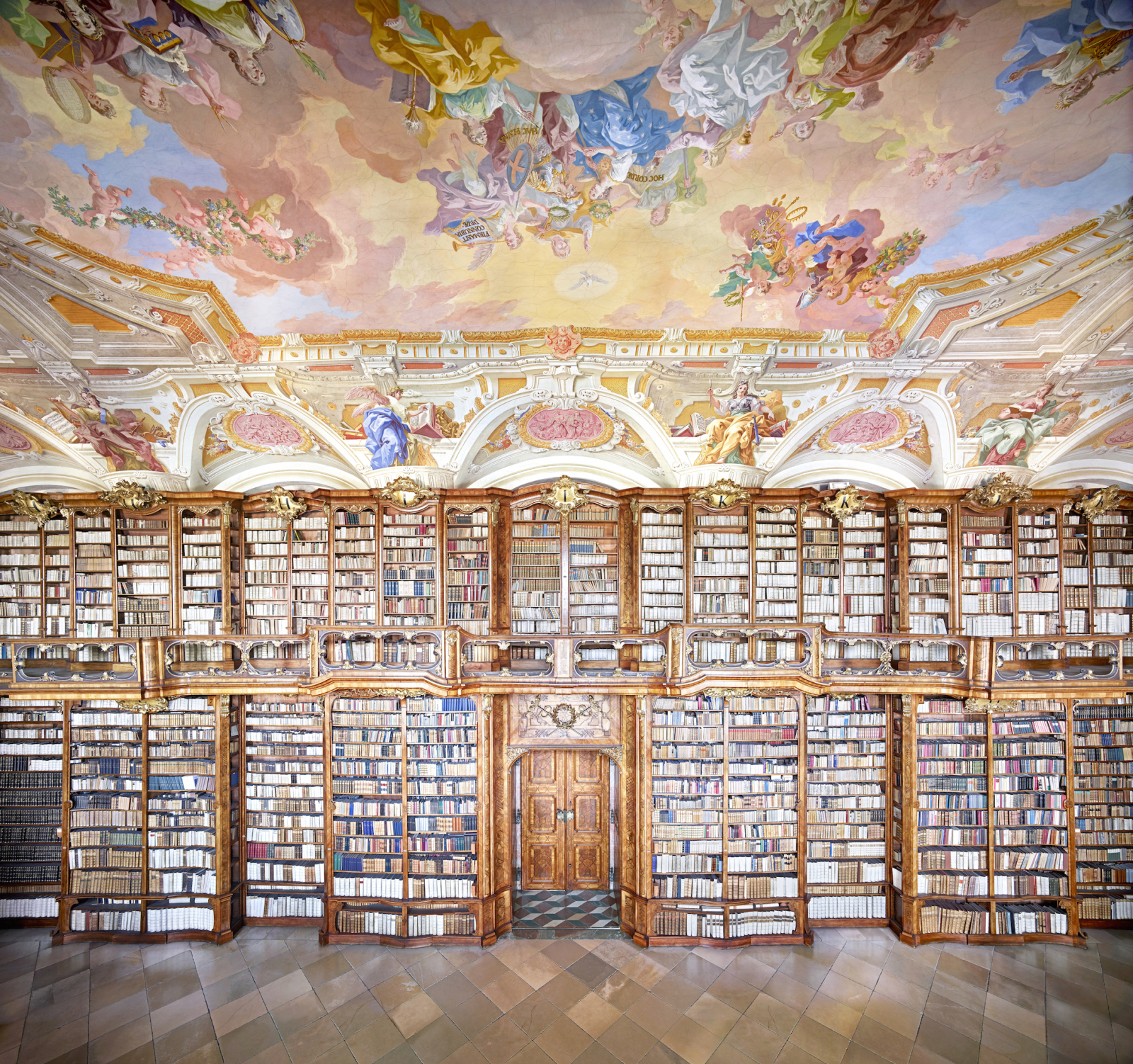

Theme I: HIVE — Human dwellings
Cities, as important symbols of civilization, are characterized by dense populations and complicated social division of labor. The term “the Hive” once referred to the frenetic social life in New York, but the metaphor of the beehive works equally well for any great human agglomeration. Pablo López Luz’s work Vista Aerea de la Ciudad de Mexico, XIII is an aerial photograph of Mexico City, the sixth biggest megalopolis in the world with a population of 22 million citizens close to the total population in Taiwan. As far as the eye can see, waves of people sweep over the landscape. The late photographer Michael Wolf was known for his photography of great Asian cities like Hong Kong. In his work Architecture of Density #91, the massive housing projects and dense social interaction insinuate societal strain, if not actual crisis. The ever-growing urban organisms that we have developed not only act as passive hives of our quotidian existence, but also proactively assist us in learning, production, and thinking.
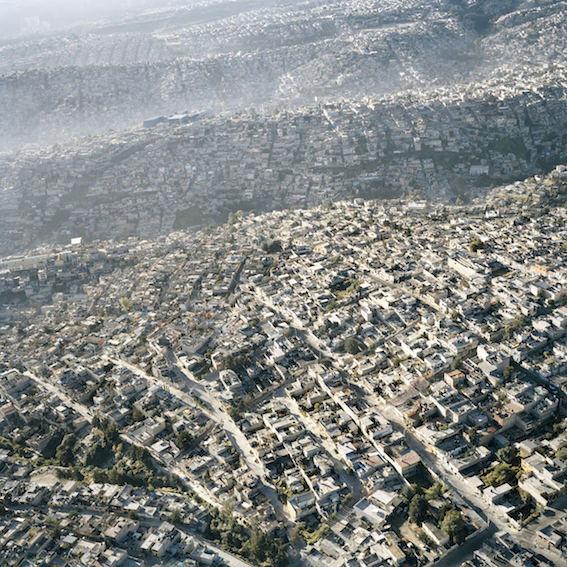
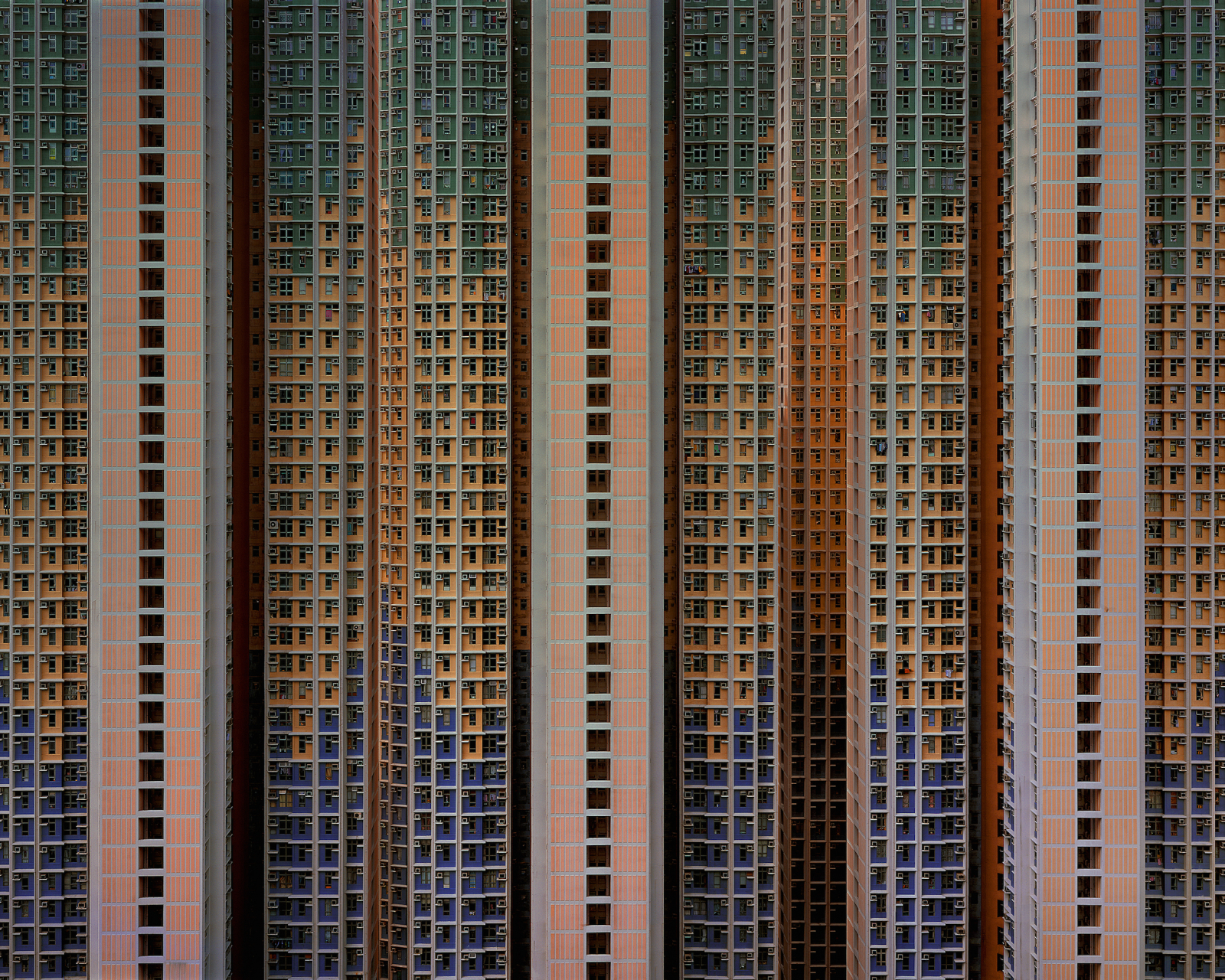
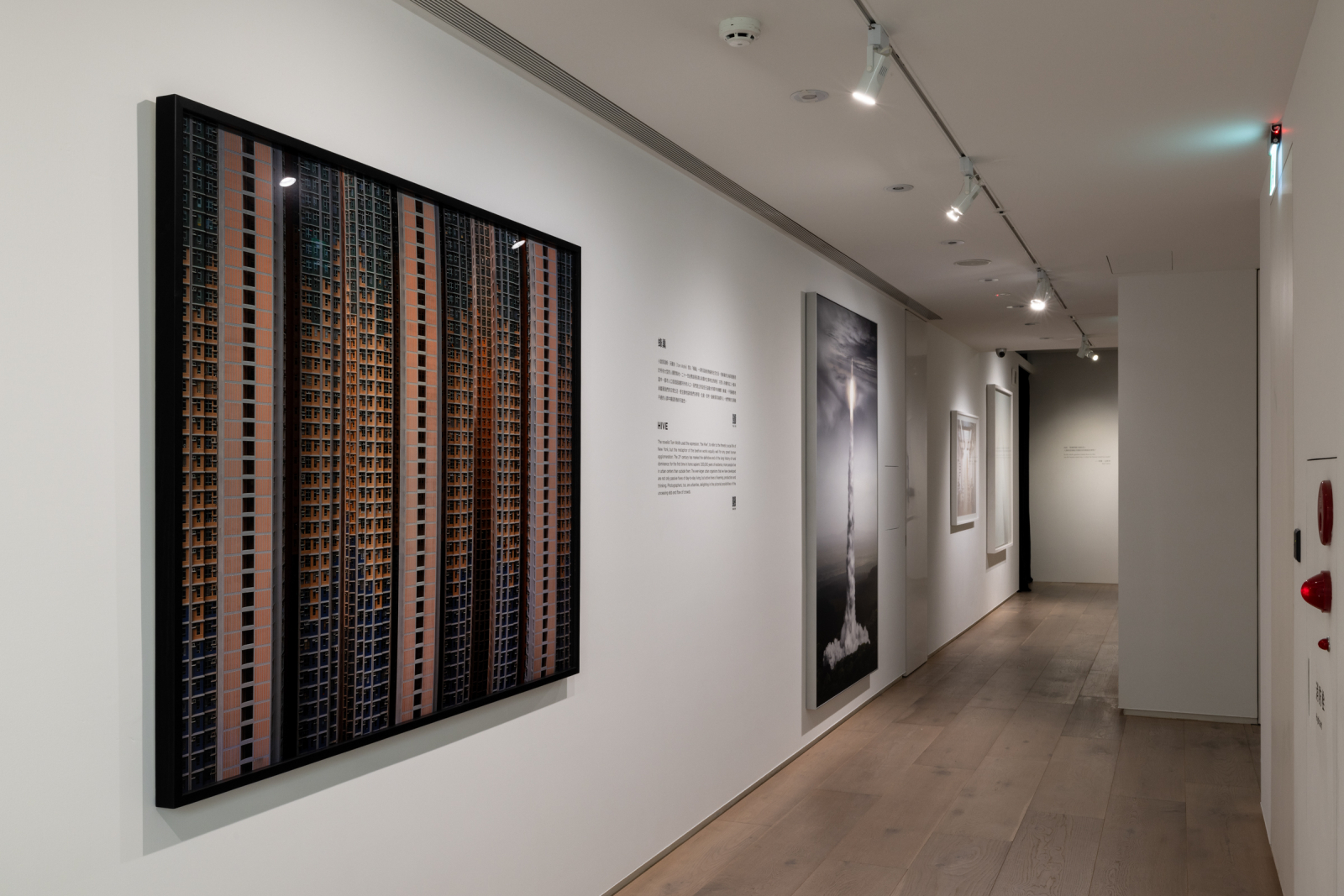
Theme II: FLOW — The movement of people and things
Nowadays, people, goods, raw materials, ideas, and even the symbols of 21st-century civilization are moving at speeds unimaginable to humans just 100 years ago, whether on the ground, across the sea, or through the air. Currency-based trade, fossil fuels, and technological networks have turned the world into a global village by enhancing human exchange and mobility. Surrounded by the sea on all sides, Taiwan relies heavily on air and maritime transport for trade. Its cargo throughput ranks among the top 20 in the world, making Taiwan an important hub of global container transport. In his work Shipping Containers, Portsmouth, VA, the photographer and pilot Alex MacLean shot the massed containers diagonally from the air to convey a sense of movement, in which cargo shipment finds expression. The standardized containers deliverable by air, land, and maritime transport have been the single largest driving force behind globalization over the past 60 years. Hao Hong’s work Book Keeping of 2007 B starts from a microscopic perspective of his daily life. It is the result of daily observations of his consumption pattern over time, which gives him an anchor in a fast-changing material world.
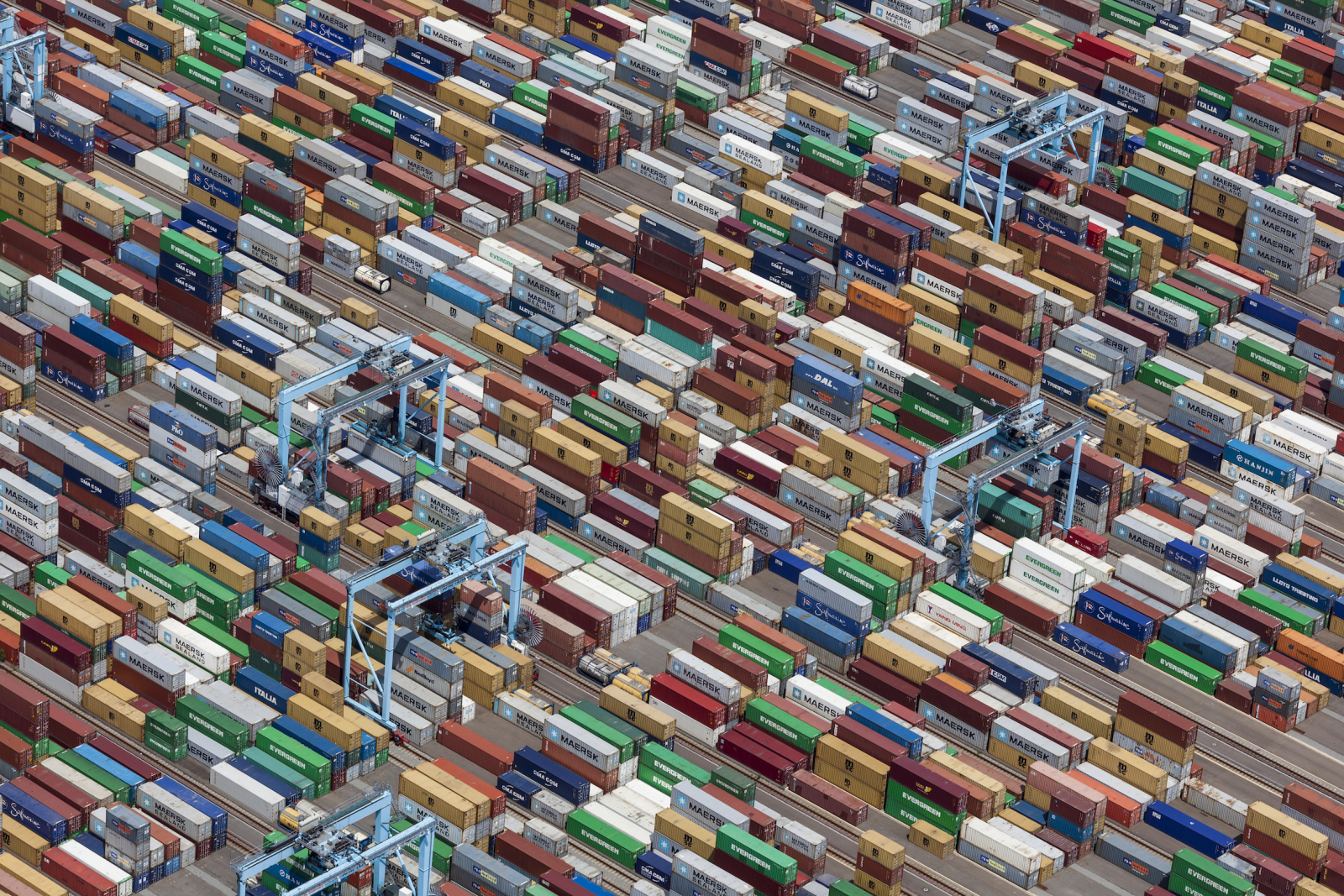
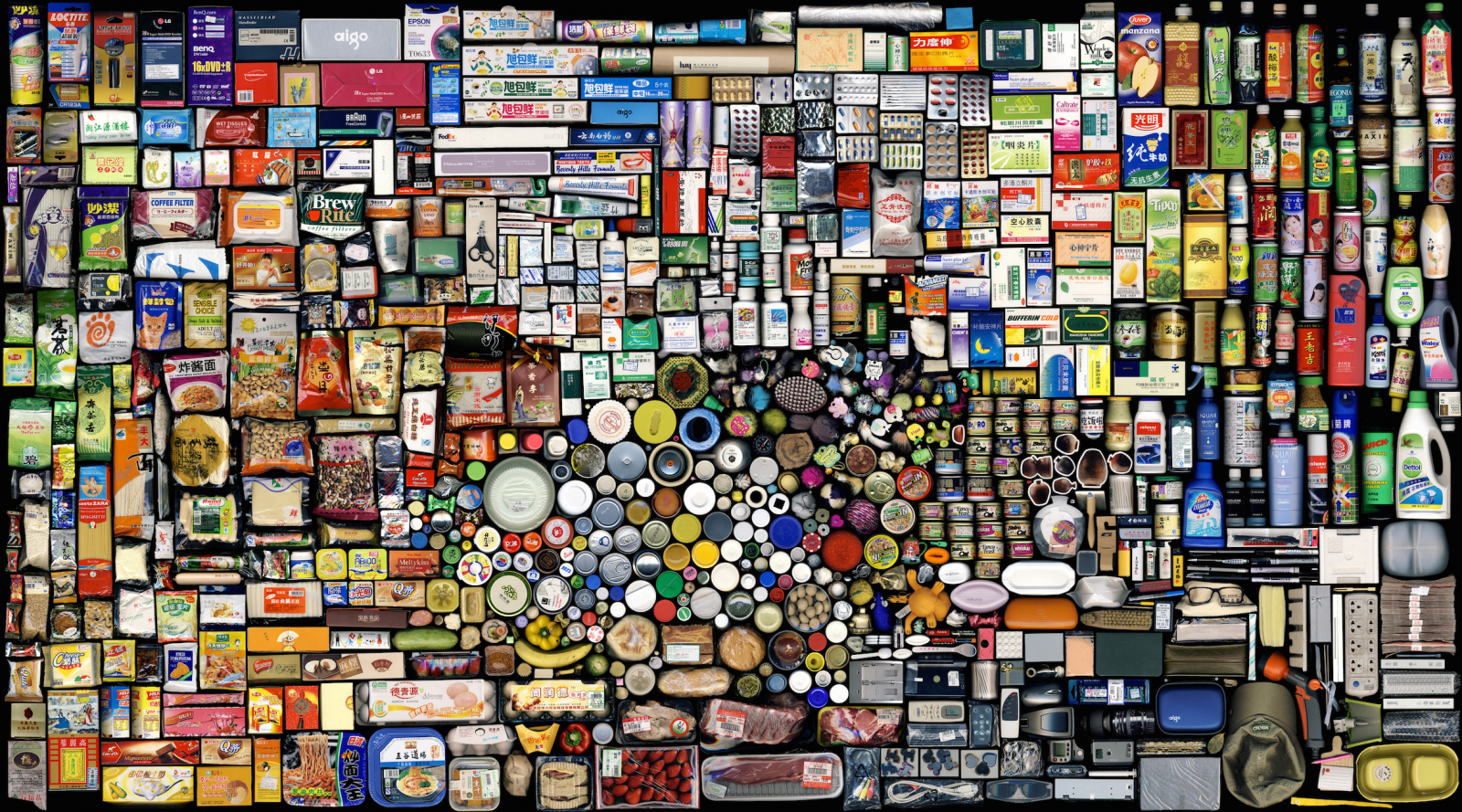
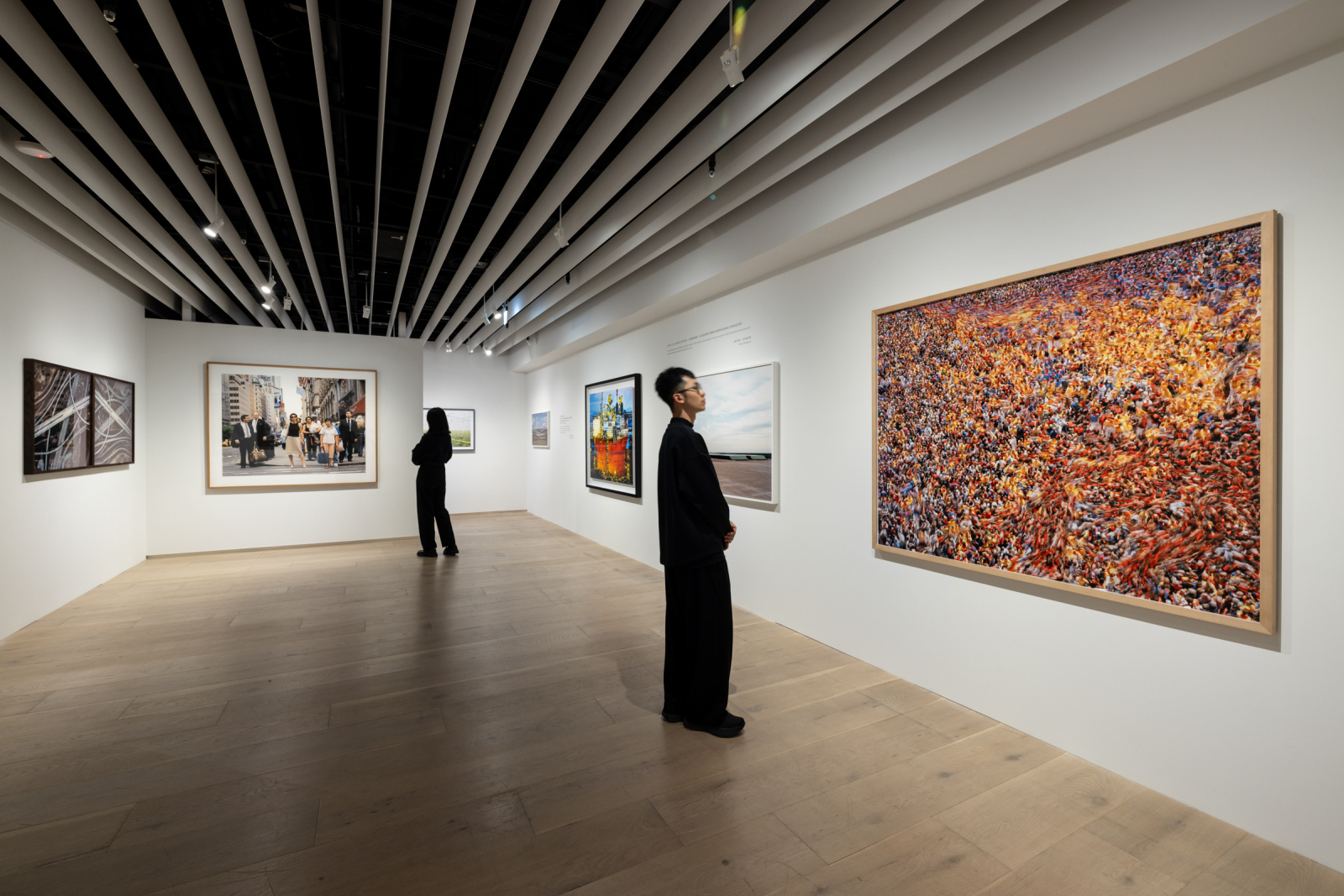
Theme III: PERSUASION — Influence
Persuasion is the act of influencing others’ viewpoints, attitudes, actions, or decision-making processes through a variety of means, such as commercial advertising, marketing, and promotion. Robert Walker’s work Times Square, New York focuses on the most bustling commercial block in the world. The gigantic advertisement for M&M’s chocolate and the stylistic posters of famous celebrities like Lady Gaga and Marilyn Monroe transmute this place into a glittering playground. Alec Soth’s work Grand Palais features Karl Lagerfeld, the most influential fashion icon of modern times, at Paris Fashion Week, the trendsetter of the fashion industry, in 2007. By including another photographer peeking in from the side in the composition, Soth punctures our assumption of exclusivity, showing that he is not alone but merely part of the construction and maintenance of celebrity.
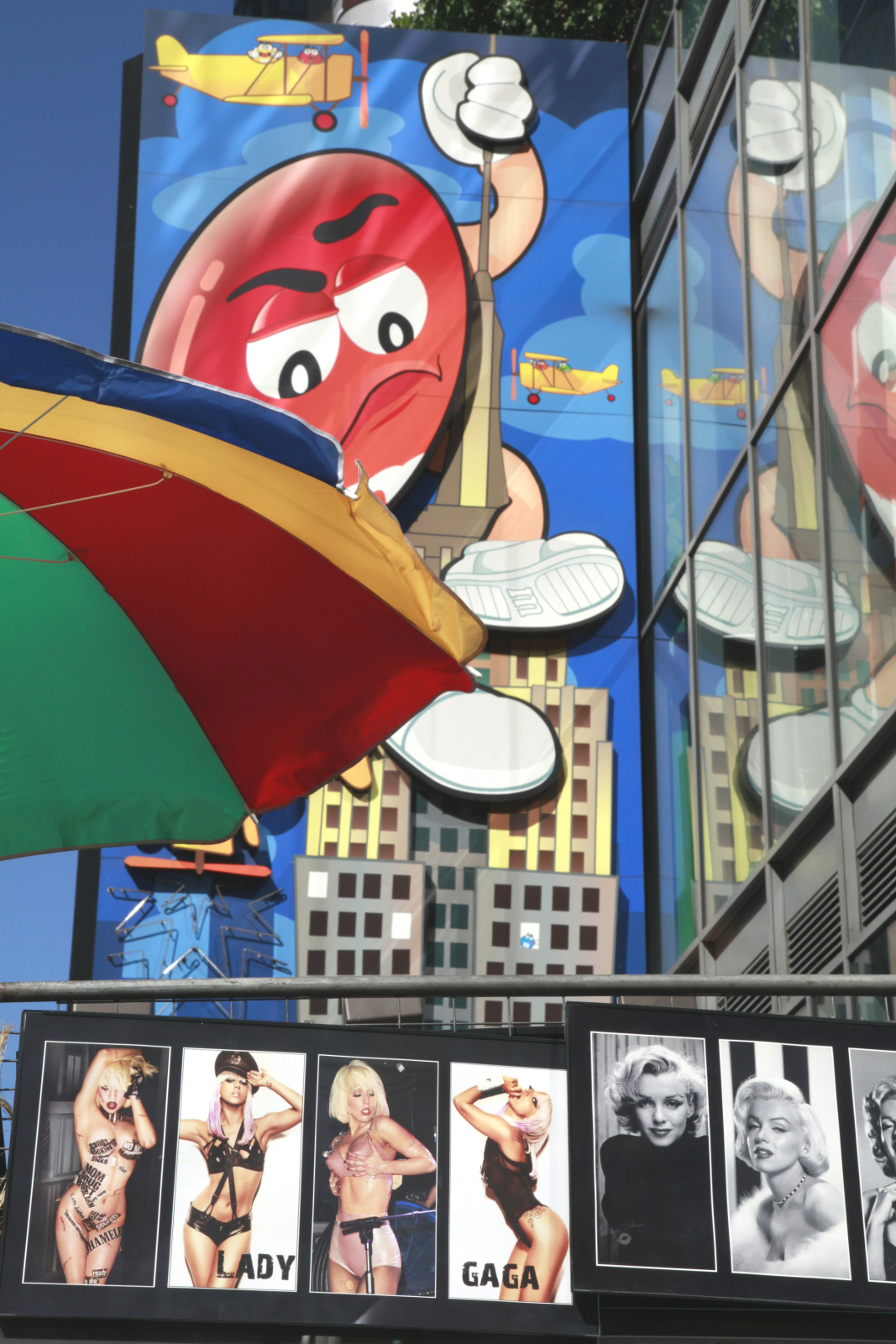
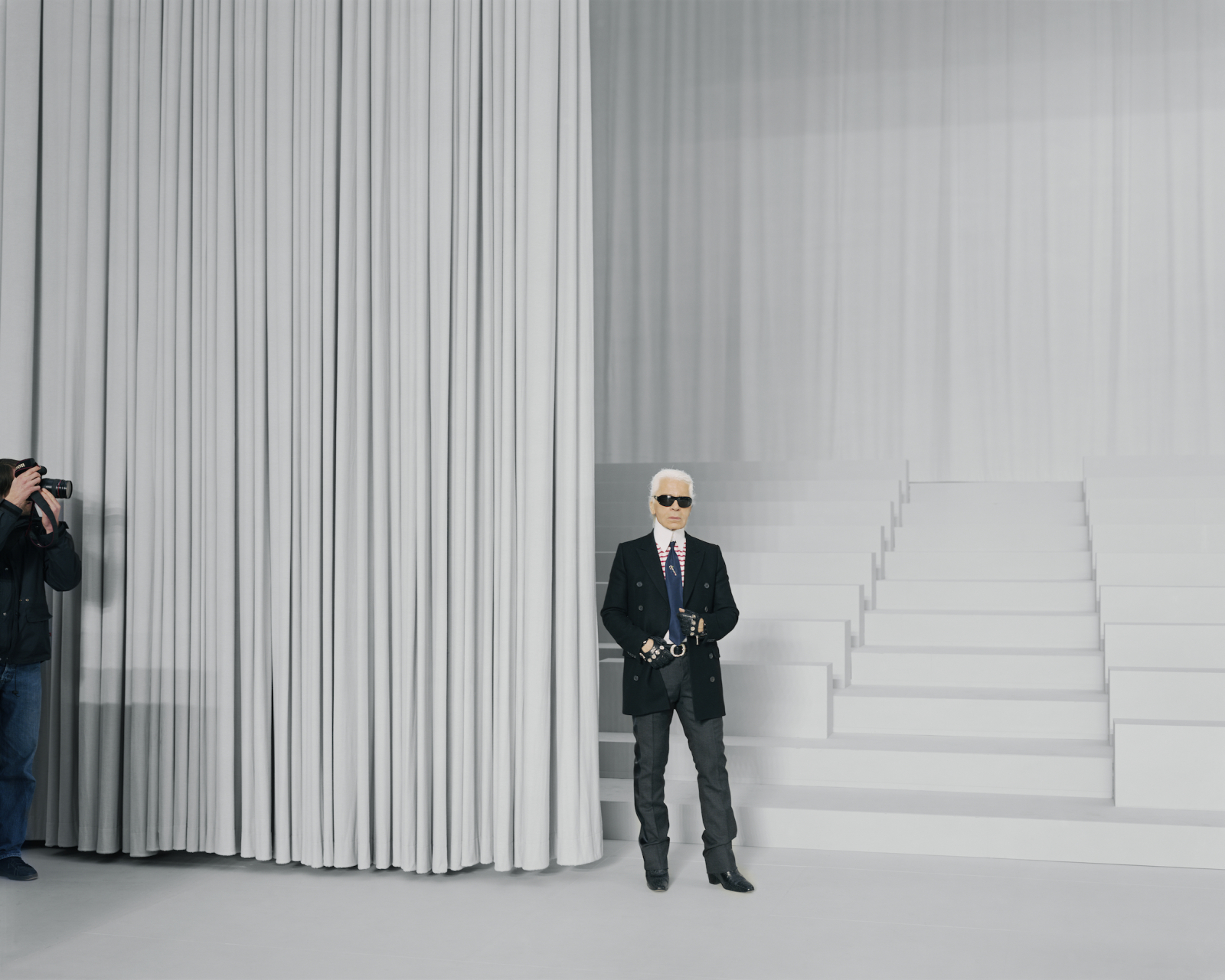
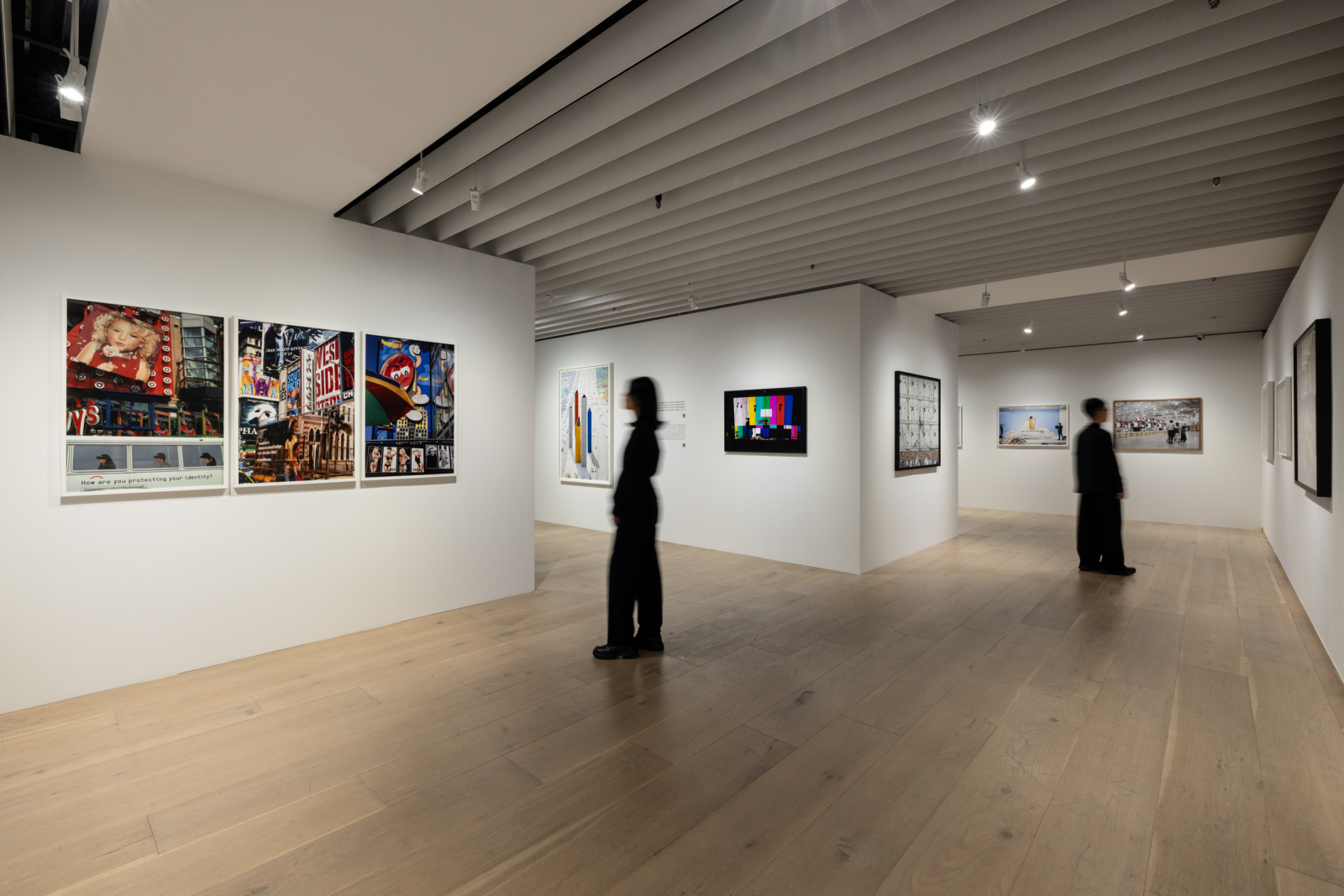
Theme IV: CONTROL — Power and order
A civilization is little more than a complex machine, with parts that are constantly being repaired or replaced. All civilizations are protective of themselves from both exogenous and endogenous threats to their existence. Taking the forms of state apparatus, governing bodies, or armies, “control” has become an indispensable tool to sustain the globalized existence of humanity. North Korea, with its centralized governance, is one of the most closed countries in the world. All filming on its sovereign territory must be approved by the government and accompanied by its agents. Suntag Noh’s work Red House I #13 shows the highly coordinated performance in an official act of state organized in an attempt to strengthen national cohesion domestically and demonstrate national prestige to the world. Luca Zanier’s work FIFA I Executive Committee Zurich portrays the meeting room for the decision-making committee behind the “World Cup,” the most-watched tournament in the world. These decision-makers gather in this underground meeting room to formulate the rules of the tournament and meanwhile handle the affairs of pre-tournament bidding as well as the tournament preparation and operation.
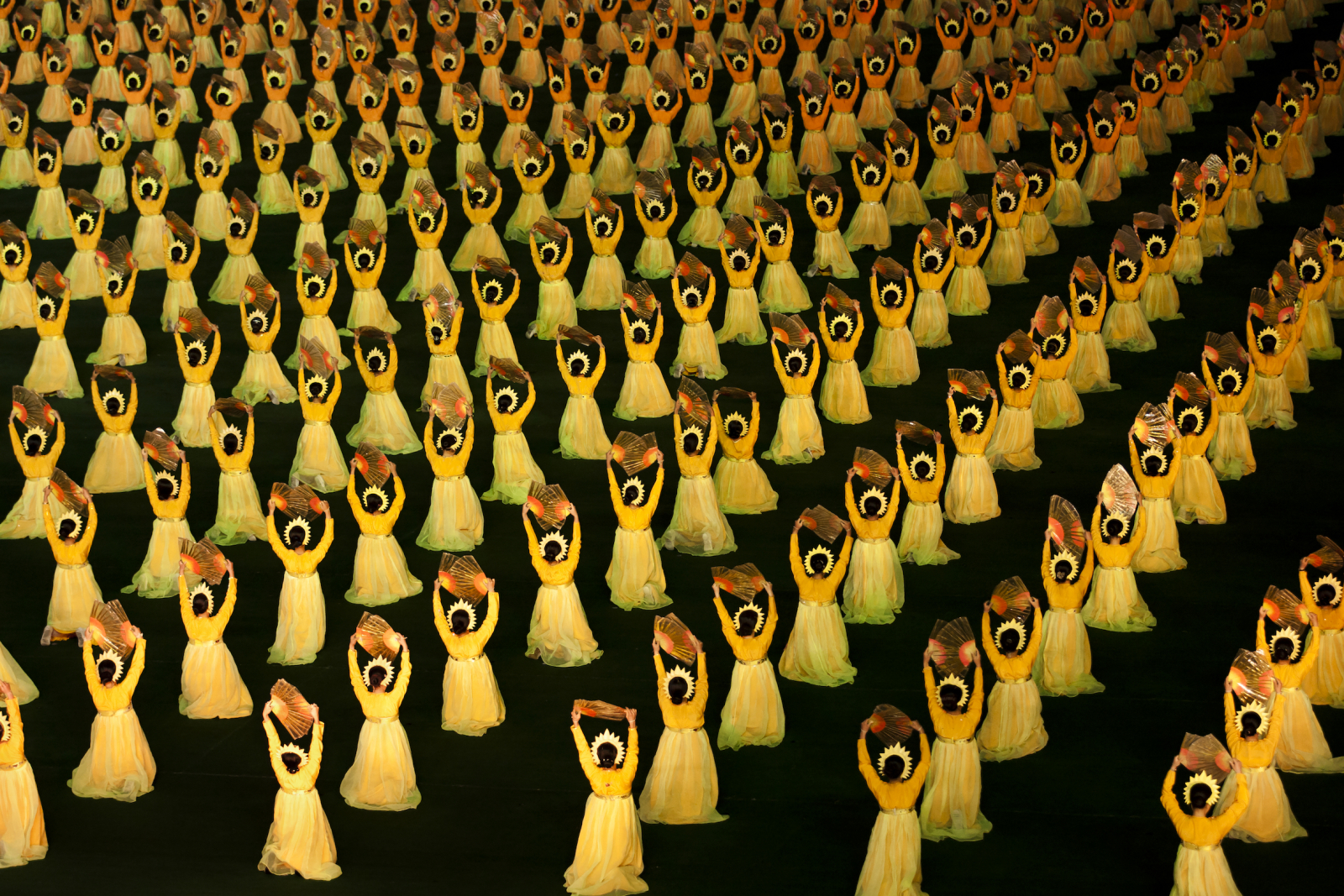
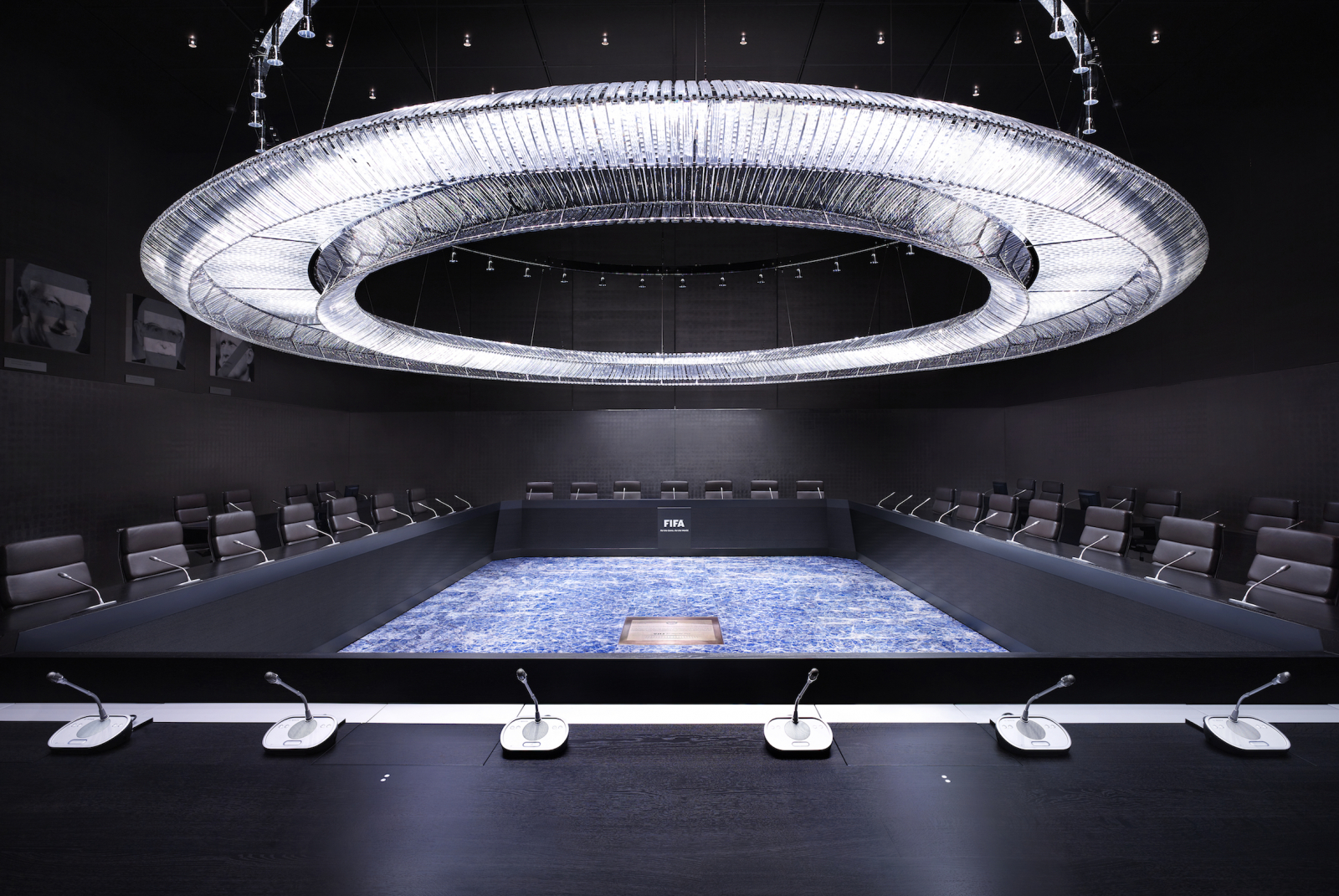
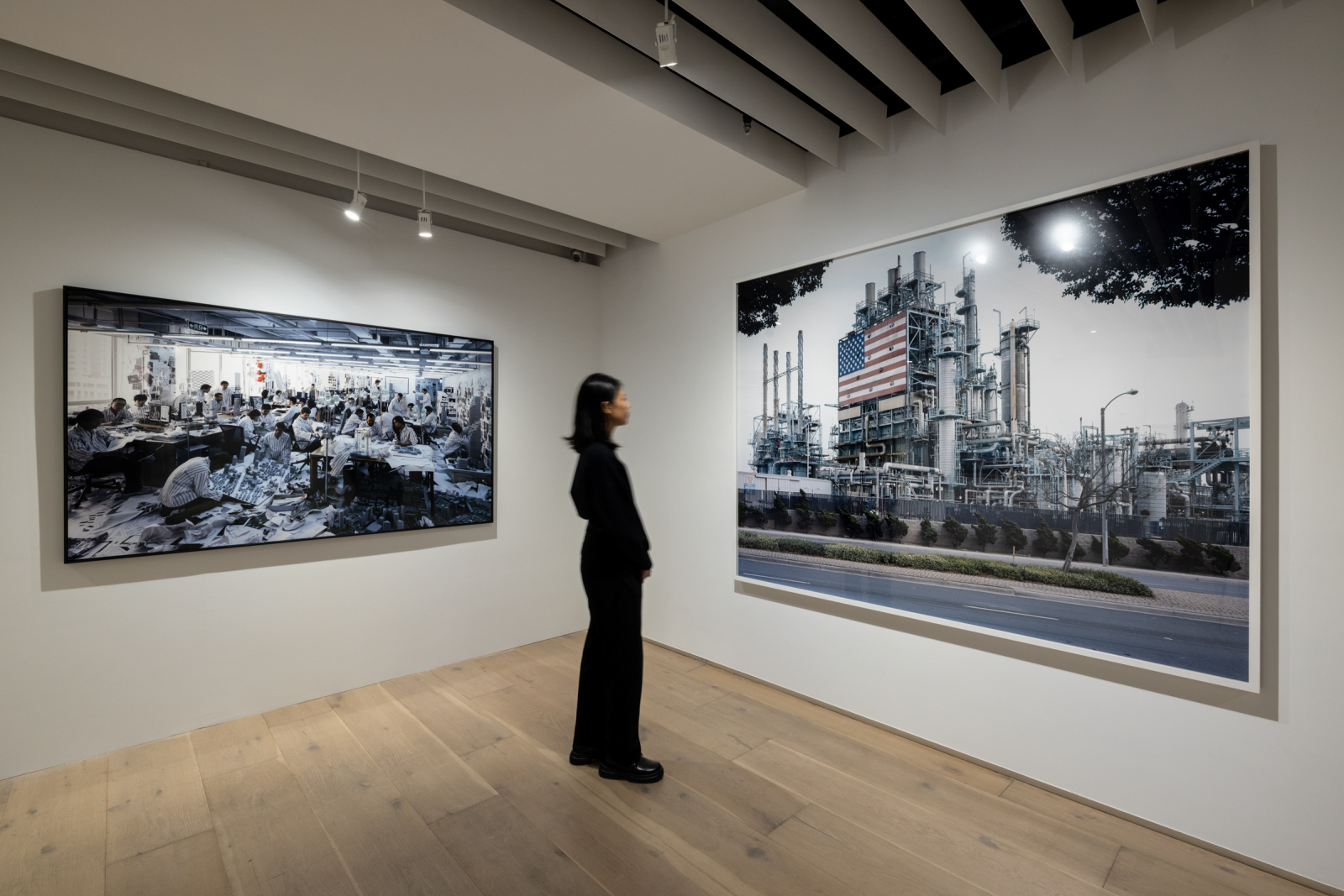
Theme V: RUPTURE — Conflict and disorder
Humankind has been constantly confronted with collective imbroglios, changes in natural order, obstructions of justice, infringements of human rights, forced displacement, armed conflicts, and the struggle or abrupt decline of industries, which is vividly manifested in the Russo-Ukrainian War, the Israeli–Palestinian conflict, and the COVID-19 pandemic in recent years. Photographers have been diligently capturing the pictures and telling the tales, forcing us to face up to our civilization’s blind spots and failures. Taiwanese artist Sheng-Wen Lo’s work Diergaarde Blijdorp, Rotterdam, The Netherlands is a work from his renowned series “White Bear” that depicts polar bears on display in their artificial habitats around the world. The bizarre mixture of animals and artificial scenes also symbolizes the relationship between humankind and the natural environment ecology in the present era. South Siu Nam Ho’s work Open Door III owes its inspiration to the series of sit-in street protests in Hong Kong lasting for more than two months in 2014.
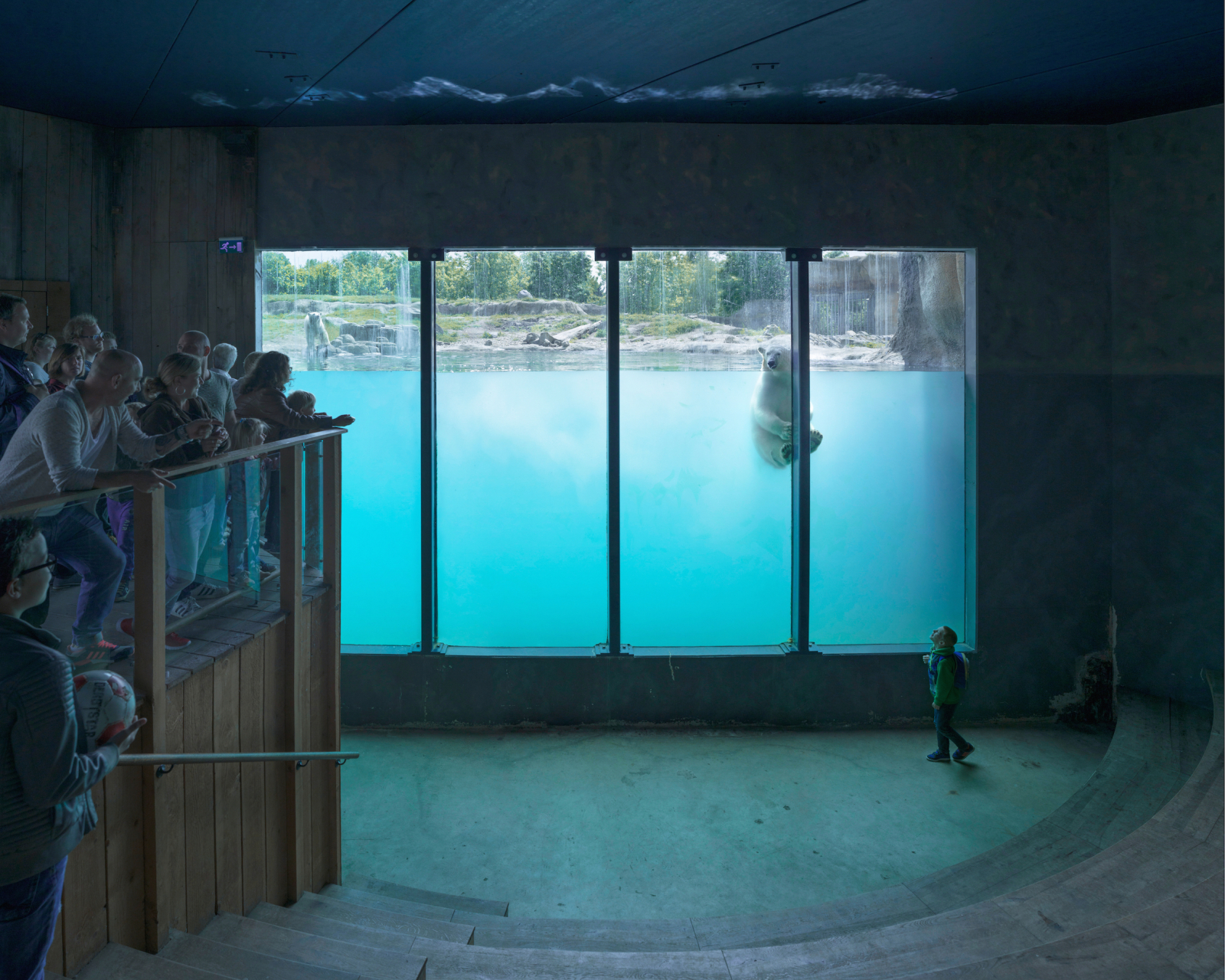
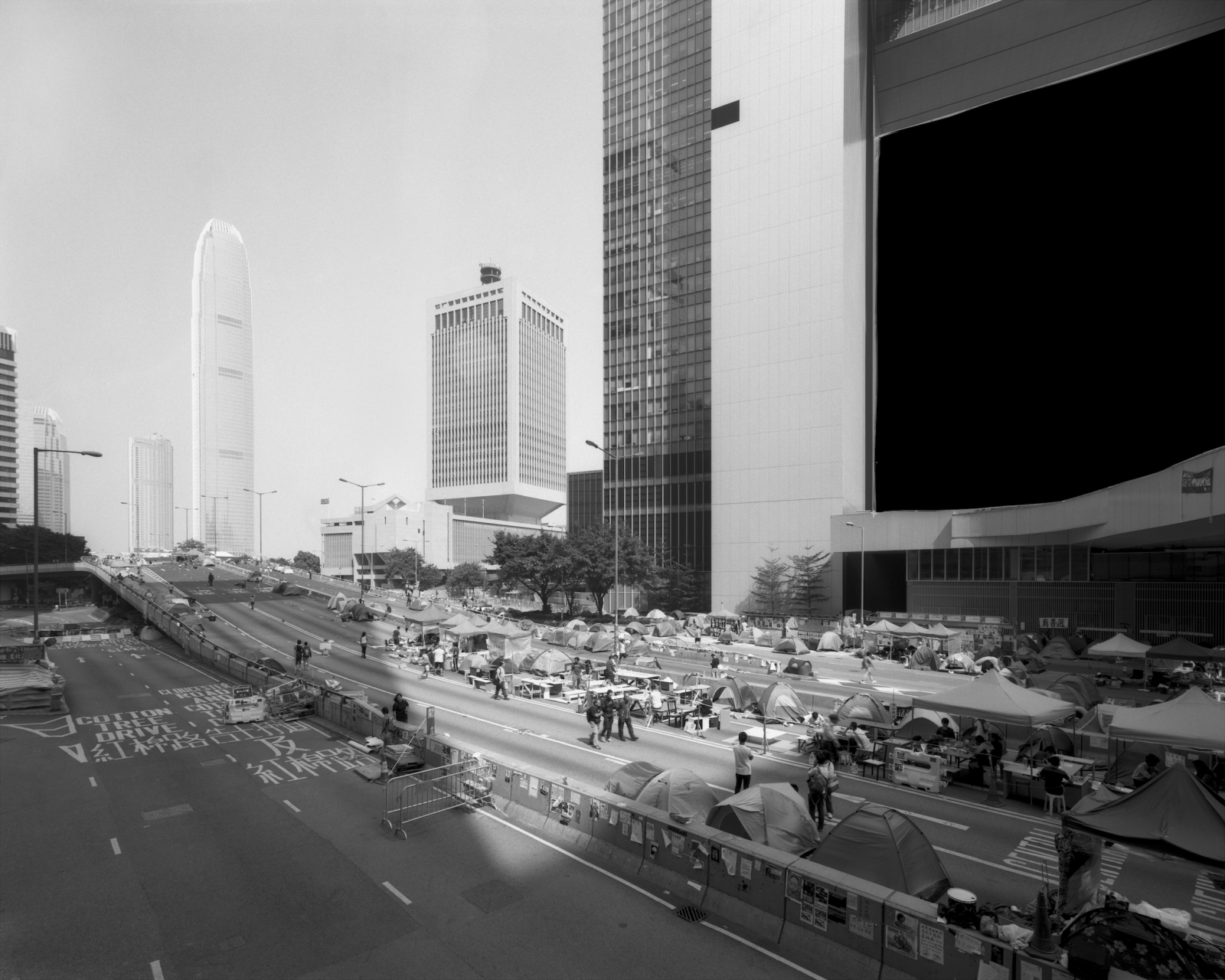
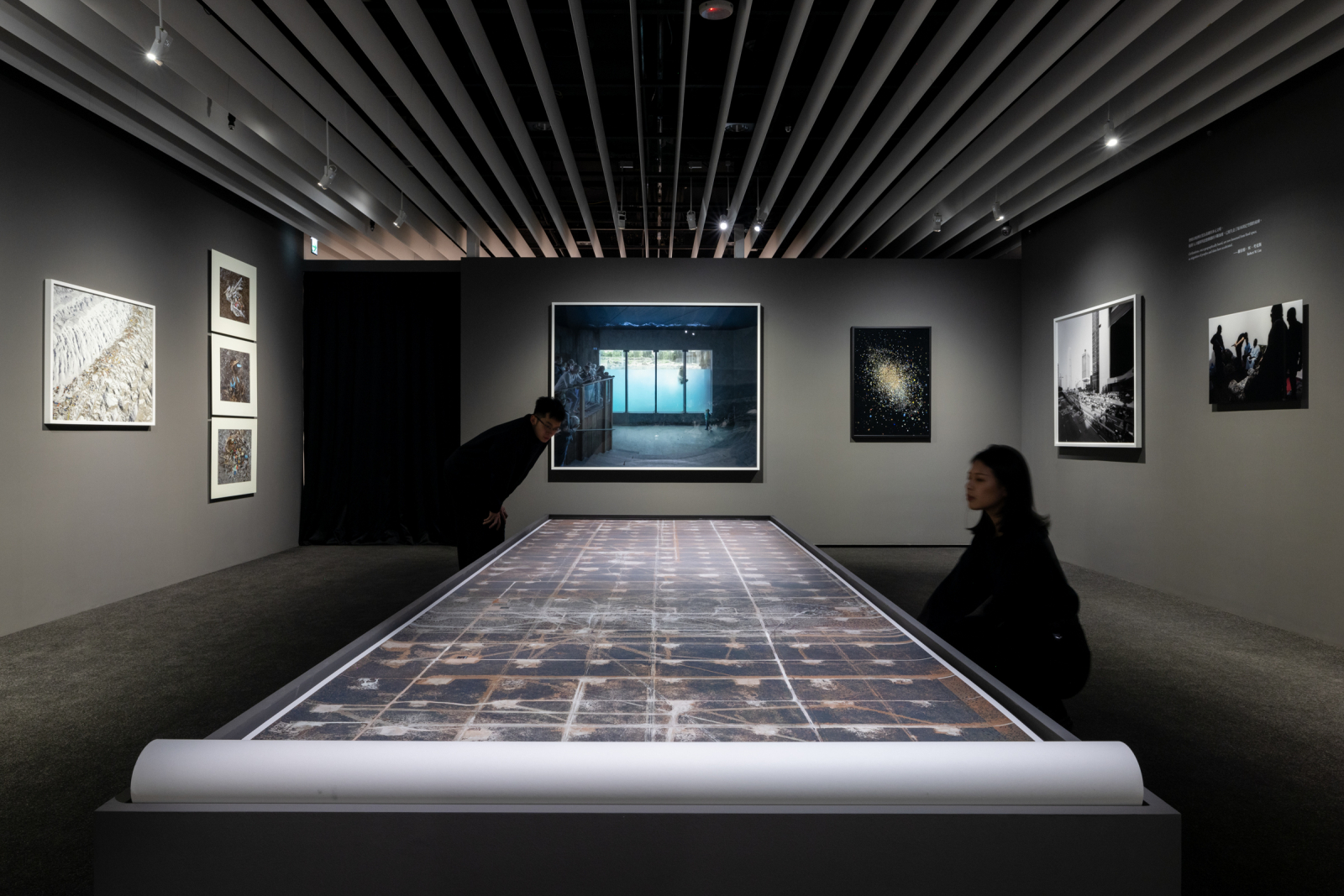
Theme VI: NEXT? — A new world
“What’s next?” We ask ourselves this question every day. As SpaceX rockets make space travel a reality, Neuralink experiments with implantable brain-computer interfaces, and the spatial computing device “Apple Vision Pro” hits the market, new technologies that once existed only in science fiction are now being developed from labs in a short period of time and quickly moved to the shelves for consumption. The foreseeable future is coming. Michael Najjar’s work orbital ascent shows a space rocket launched into orbit from the Guiana Space Center, implying the artist’s concern and pondering over human life on other planets in the future. Max Aguilera-Hellweg’s work series Humanoid captures the true-to-life android head that embodies our ceaseless experimentation and exploration of our role and the capacity of the human body. Craving innovation and change in every area of our lives, we may nonetheless wonder what humans and the world will look like in the next century.
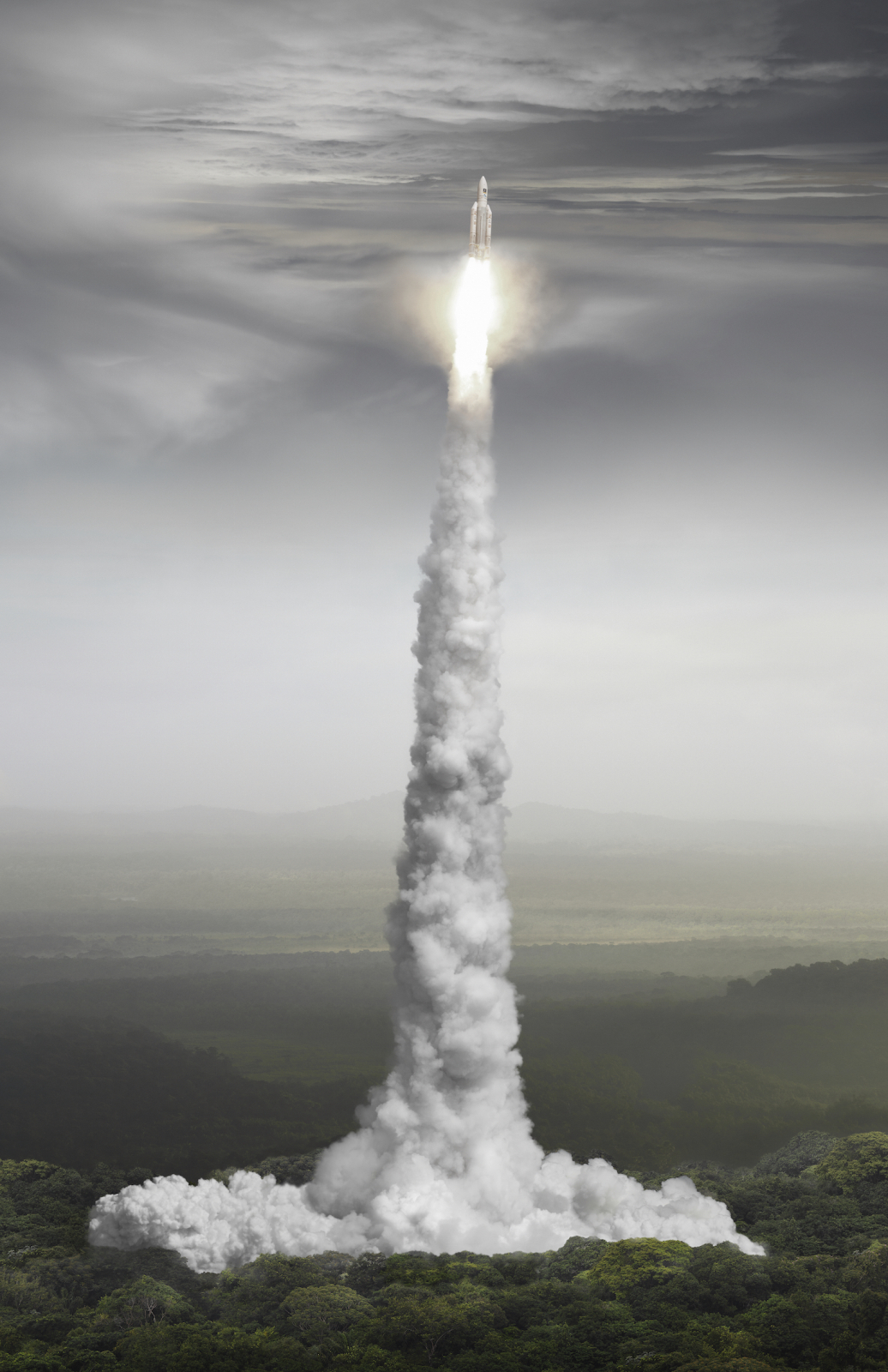
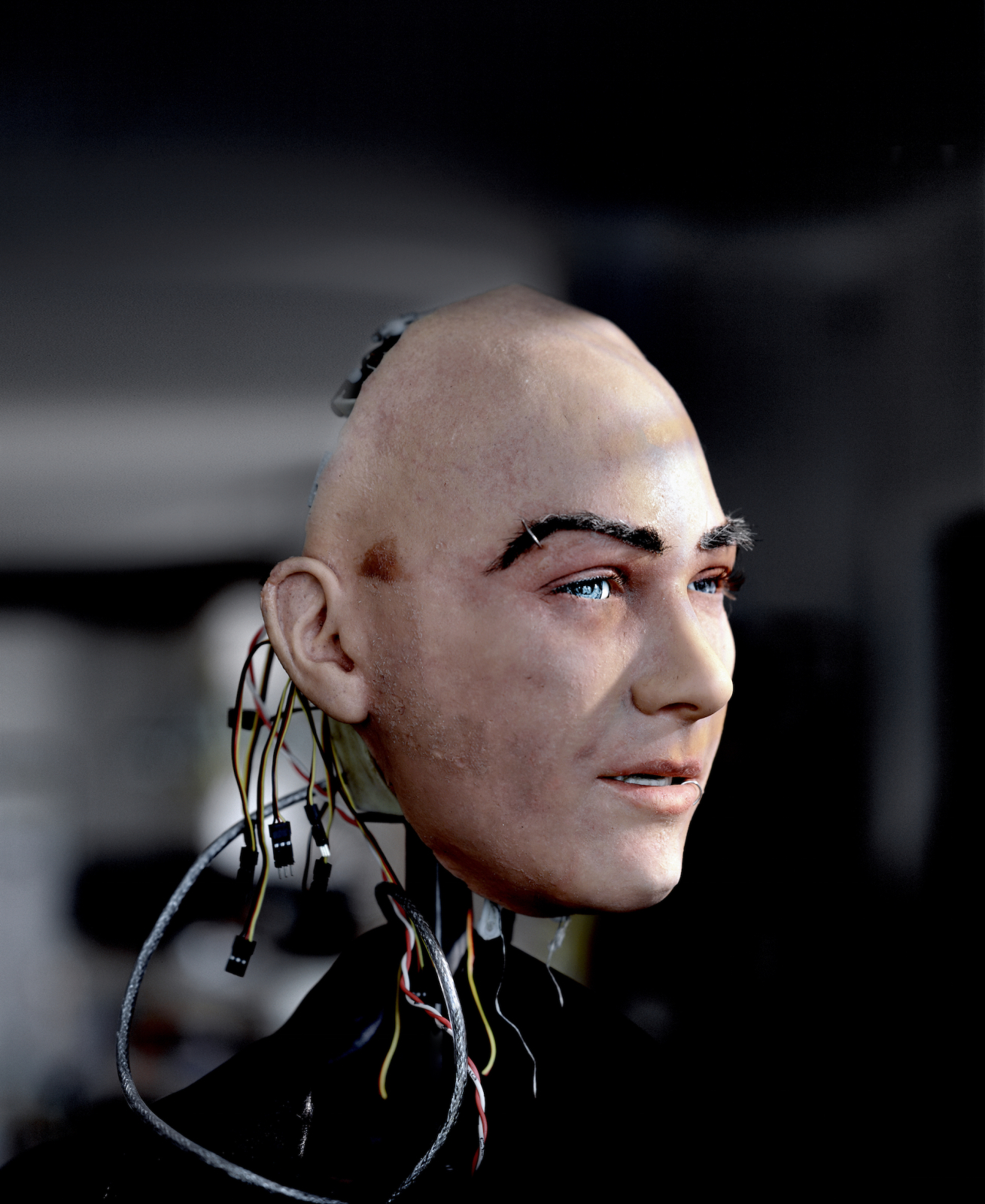
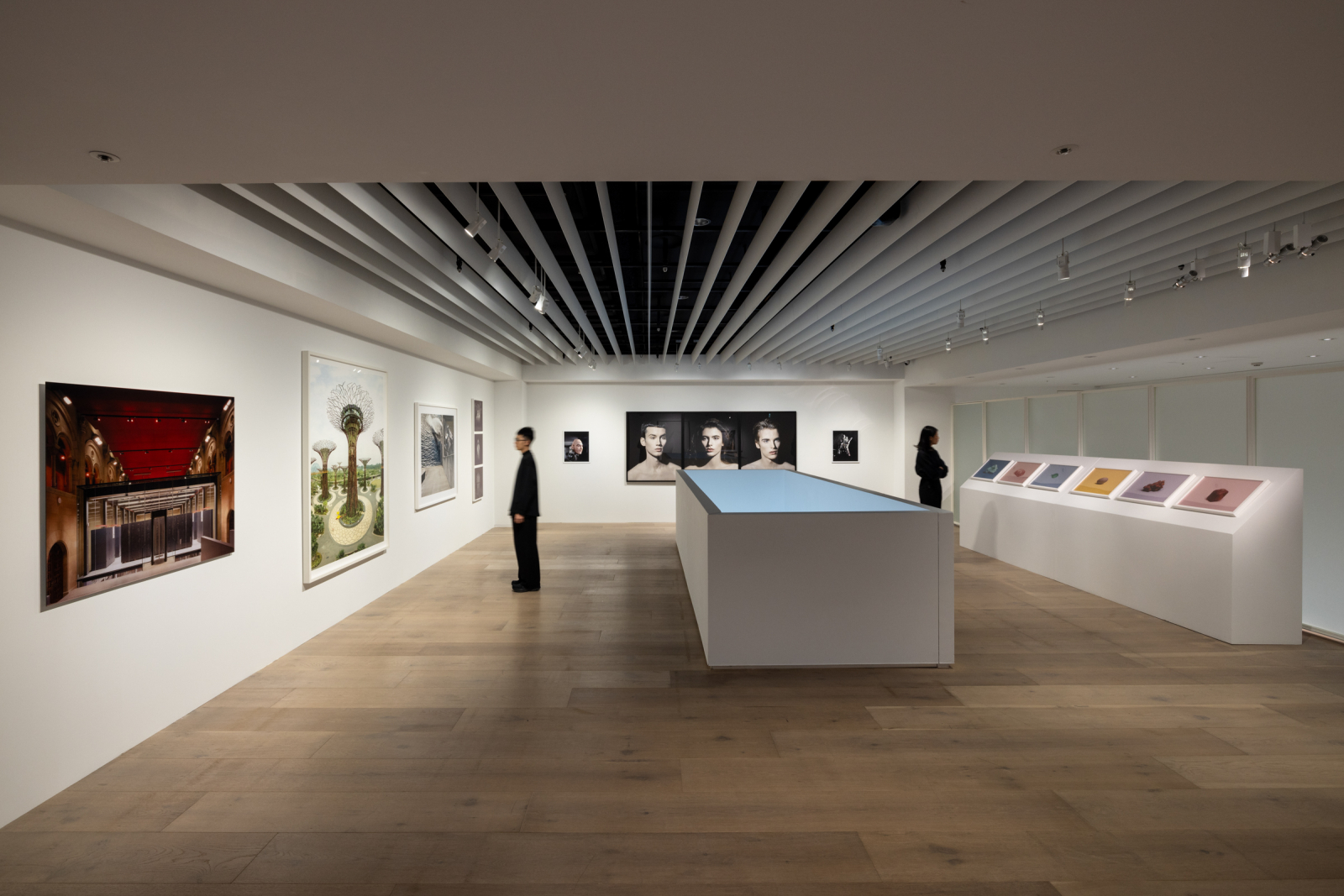
The main venue at the Jut Art Museum will host six themes of “Civilization” including “HIVE,” “FLOW,” “PERSUASION,” “CONTROL,” “RUPTURE,” and “NEXT?” and the other two themes — “ESCAPE” and “ALONE TOGETHER” — will take place in the satellite venue at the NOKE 3F Uncanny from 18 May onward.
The Jut Art Museum has a long-standing commitment to exploring the issues of the “future” and “city” and will exhibit at Taipei Dangdai this year.
The Jut Art Museum will join Taipei Dangdai this year, and show how the museum has served as a new form of platform, catalyst, and think tank in fulfilling corporate social responsibility and responding to the social dynamics of the 21st century through exhibitions and programs. The past exhibitions included TADAO ANDO: ENDEAVORS, Kengo Kuma: Place / Inspiration, Human Nature, Its Generosity and Form—Akihisa Hirata, Drawing Ambience: Alvin Boyarsky and the Architectural Association, and SOS Brutalism—Save the Concrete Monsters, The Future Life, Future You – Digital, Machine and Cyborgs, Dasein – Born to Be Human among others. This year, through the “Civilization” it comprehensively cogitates on its contemporary and imagine a foreseeable future. The museum provides a platform for the encounter of local and international thoughts from different perspectives on locality to stimulate futuristic imagination in the public. For more information, please visit the Jut Art Museum’s official website.
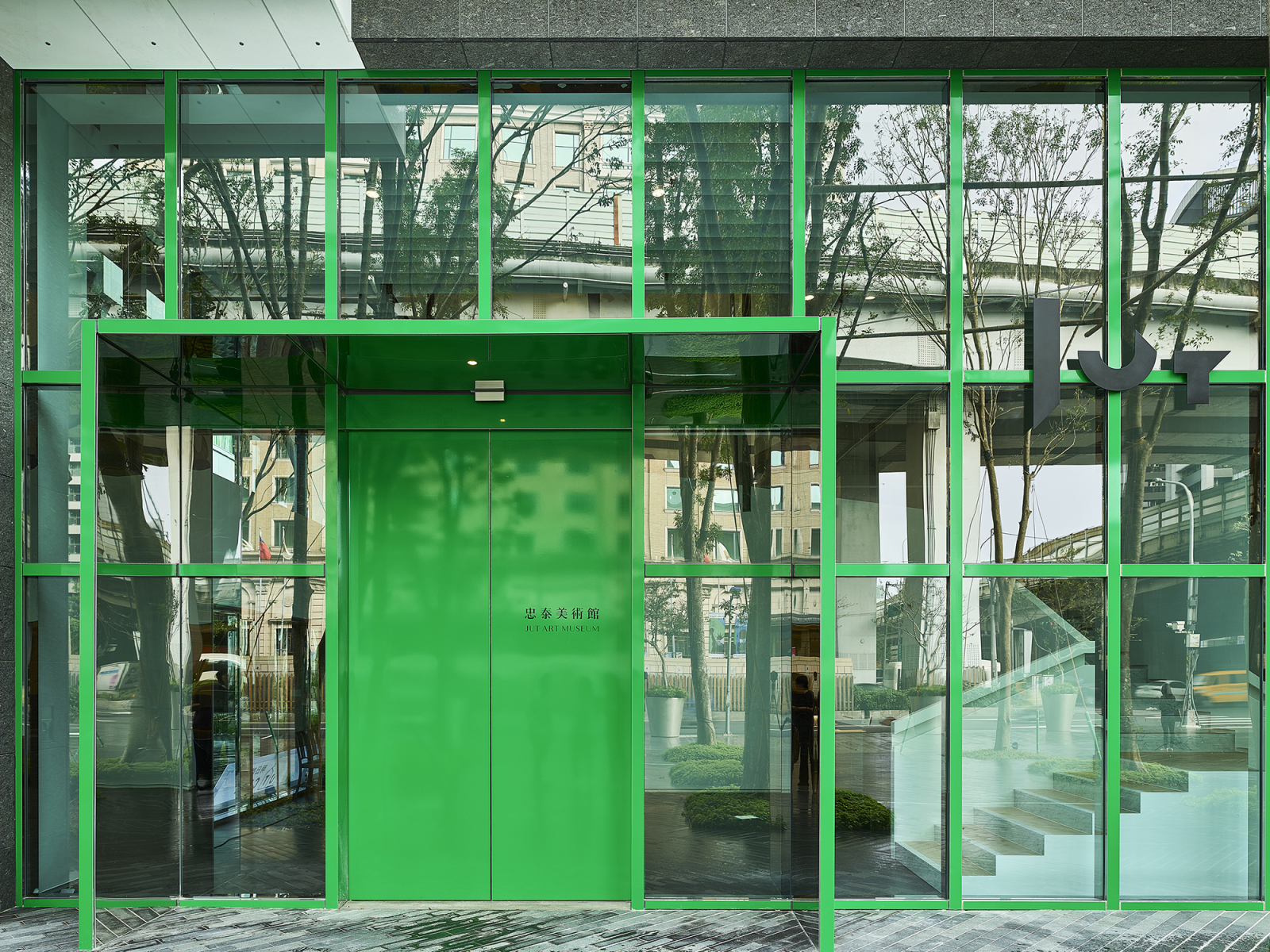
Information about “Civilization: The Way We Live Now”
https://jam.jutfoundation.org.tw/en/exhibition/107/4652
Main Venue|Jut Art Museum
(No.178, Sec. 3, Civic Blvd., Da'an Dist., Taipei City 106, Taiwan)
Date|2024.03.16 SAT- 2024.06.30 SUN
Opening Hours|TUE-SUN 10:00-18:00 (Closed on Mondays)
Student Day|Free Admission once on WED (With valid student ID)
Admission|General TWD 150, Concessions TWD 120 (Student, seniors aged 65 and above, and groups of 10 or more)
Free Admission for the disabled and a companion, children aged 12 and under (Concessions or Free Admission upon presentation of valid proof)
Satellite Venue|NOKE 3F Uncanny
(No. 200, Lequn 3rd Rd., Zhongshan Dist., Taipei City 104, Taiwan)
Date|2024.05.18 SAT- 2024.06.30 SUN
Opening Hours|SUN-THU 11:00-21:30, FRI-SAT 11:00-22:00
Admission|General TWD 50 (Free Admission for the disabled and a companion, children aged 12 and under with valid identification)
Organizer|Jut Art Museum
Curatorial Team|Jut Art Museum, Foundation for the Exhibition of Photography, National Museum of Modern and Contemporary Art of Korea
Information about Jut Art Museum at Taipei Dangdai
Taipei Dangdai Venue|Taipei Nangang Exhibition Center, Hall 1 (4th Floor)
(No. 1, Jingmao 2nd Road, Nangang District, Taipei City 115, Taiwan)
Date|2024.05.10 FRI- 2024.05.12 SUN
Booth Arena|Cultural Partner
- The press kits and more photos can be downloaded in the link: https://reurl.cc/bVX0Mv
- Standard Usage for Images: Images may not be cropped or changed. Dimensions must be retained. Text overlay is not permitted. Images have to be identified as an artwork using the provided complete image caption as well as the ©.
